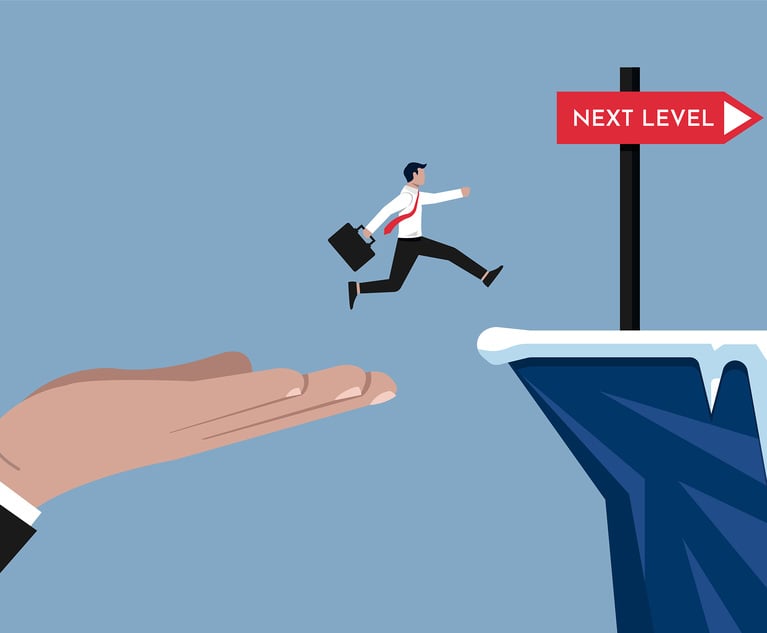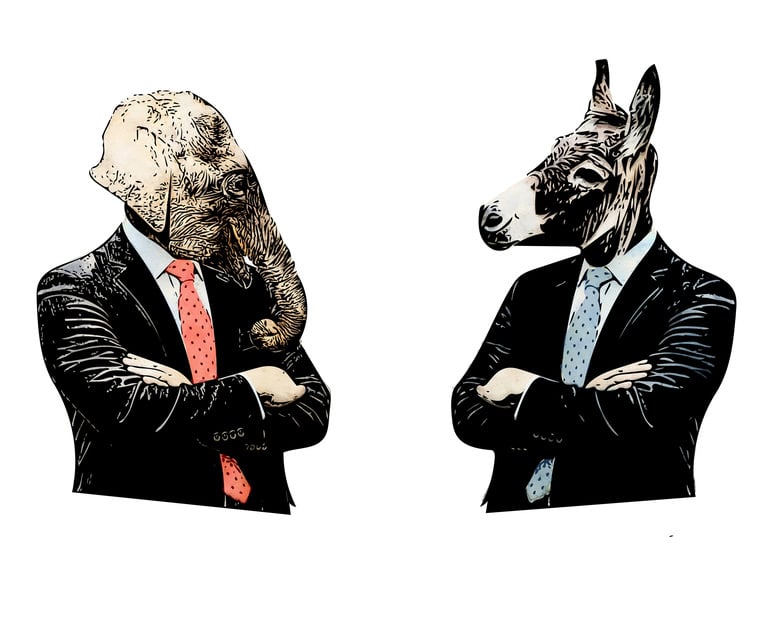The 411 on Thank You Notes
For the ASAP corporate cultures of 2009, don't look to Emily Post for guidance on thank you notes. Just read this column.
September 20, 2009 at 08:00 PM
6 minute read
Since this summer's career advice columns focused on interviewing, it seems fitting to close the season with some guidance on the next step. Post-interview, a thank you note is expected. But given the lawyerly craving to continually persuade, many candidates commit the error of trying to do too much with a thank you note.
Before we get to content, however, let me put an end to the handwritten note versus e-mail debate. Once upon a time, a handwritten note was viewed as perfectly appropriate for a thank you note. Nonetheless, I used to advise candidates to choose a typewritten letter over a handwritten note, mainly to avoid poor penmanship, but also because I felt that a professional letter was better received. I cannot pinpoint the exact point in time when all snail mail became quaint and old school, but it's been at least a few years.
E-mail your thank you notes. Do it within 24 hours of your interview. A quick turnaround reinforces your interest level in the position and, more importantly, sends the message that you will fit within a culture that values speed and responsiveness–essentially the prevailing corporate culture at almost every place of employment today. Still, the method of communication is less important than the content.
On content, please understand that a thank you note is a thankless exercise. A thank you note won't change any opinions. The interviewer has already decided if he or she likes you. I have never experienced a situation in which a corporate client has moved a candidate up its preference list based on a thank you note. However, I have experienced the almost unthinkable opposite result. A candidate can shoot herself in the foot with a thank you note. Examples of what not to do:
1. Never send anything with a misspelling.
2. Do not send a list of all the reasons why you are perfect for the job.
3. Do not point out a self-perceived mistake you made in the interview and try to clarify something you said.
In short, don't try to use the thank you note as another vehicle to persuade and sell yourself. The interview itself was the time for that.
Good thank you notes follow the KISS rule. Yes: Keep It Simple, Stupid. And short. The sole purpose of the thank you note is to reinforce your interest level. Write one sentence articulating your appreciation for the interviewer's time, and another sentence confirming your interest level in the position. Proofread the e-mail three times, do not rely on spellcheck, and then hit the send button.
There are two worthy exceptions to the KISS rule. If the interviewer specifically asks you for additional information or post-interview examples of your work in a certain area, of course provide that in as much detail as you deem appropriate. The second exception is a valuable extension of the reference-checking process. Your interview may yield an “it's a small world” moment when you and the interviewer mention a mutual acquaintance or professional contact. If this individual is not part of your standard reference package, call the mutual acquaintance ASAP. Assuming you get permission and you are confident about what this mutual acquaintance will say about you, mention her in your thank you note, offer the phone number, and encourage the interviewer to speak with her.
Since this summer's career advice columns focused on interviewing, it seems fitting to close the season with some guidance on the next step. Post-interview, a thank you note is expected. But given the lawyerly craving to continually persuade, many candidates commit the error of trying to do too much with a thank you note.
Before we get to content, however, let me put an end to the handwritten note versus e-mail debate. Once upon a time, a handwritten note was viewed as perfectly appropriate for a thank you note. Nonetheless, I used to advise candidates to choose a typewritten letter over a handwritten note, mainly to avoid poor penmanship, but also because I felt that a professional letter was better received. I cannot pinpoint the exact point in time when all snail mail became quaint and old school, but it's been at least a few years.
E-mail your thank you notes. Do it within 24 hours of your interview. A quick turnaround reinforces your interest level in the position and, more importantly, sends the message that you will fit within a culture that values speed and responsiveness–essentially the prevailing corporate culture at almost every place of employment today. Still, the method of communication is less important than the content.
On content, please understand that a thank you note is a thankless exercise. A thank you note won't change any opinions. The interviewer has already decided if he or she likes you. I have never experienced a situation in which a corporate client has moved a candidate up its preference list based on a thank you note. However, I have experienced the almost unthinkable opposite result. A candidate can shoot herself in the foot with a thank you note. Examples of what not to do:
1. Never send anything with a misspelling.
2. Do not send
3. Do not point out a self-perceived mistake you made in the interview and try to clarify something you said.
In short, don't try to use the thank you note as another vehicle to persuade and sell yourself. The interview itself was the time for that.
Good thank you notes follow the KISS rule. Yes: Keep It Simple, Stupid. And short. The sole purpose of the thank you note is to reinforce your interest level. Write one sentence articulating your appreciation for the interviewer's time, and another sentence confirming your interest level in the position. Proofread the e-mail three times, do not rely on spellcheck, and then hit the send button.
There are two worthy exceptions to the KISS rule. If the interviewer specifically asks you for additional information or post-interview examples of your work in a certain area, of course provide that in as much detail as you deem appropriate. The second exception is a valuable extension of the reference-checking process. Your interview may yield an “it's a small world” moment when you and the interviewer mention a mutual acquaintance or professional contact. If this individual is not part of your standard reference package, call the mutual acquaintance ASAP. Assuming you get permission and you are confident about what this mutual acquaintance will say about you, mention her in your thank you note, offer the phone number, and encourage the interviewer to speak with her.
This content has been archived. It is available through our partners, LexisNexis® and Bloomberg Law.
To view this content, please continue to their sites.
Not a Lexis Subscriber?
Subscribe Now
Not a Bloomberg Law Subscriber?
Subscribe Now
NOT FOR REPRINT
© 2025 ALM Global, LLC, All Rights Reserved. Request academic re-use from www.copyright.com. All other uses, submit a request to [email protected]. For more information visit Asset & Logo Licensing.
You Might Like
View All
Beyond the Title: Developing a Personal Brand as General Counsel

Step 1 for Successful Negotiators: Believe in Yourself
Trending Stories
- 1Restoring Trust in the Courts Starts in New York
- 2'Pull Back the Curtain': Ex-NFL Players Seek Discovery in Lawsuit Over League's Disability Plan
- 3Tensions Run High at Final Hearing Before Manhattan Congestion Pricing Takes Effect
- 4Improper Removal to Fed. Court Leads to $100K Bill for Blue Cross Blue Shield
- 5Michael Halpern, Beloved Key West Attorney, Dies at 72
Who Got The Work
Michael G. Bongiorno, Andrew Scott Dulberg and Elizabeth E. Driscoll from Wilmer Cutler Pickering Hale and Dorr have stepped in to represent Symbotic Inc., an A.I.-enabled technology platform that focuses on increasing supply chain efficiency, and other defendants in a pending shareholder derivative lawsuit. The case, filed Oct. 2 in Massachusetts District Court by the Brown Law Firm on behalf of Stephen Austen, accuses certain officers and directors of misleading investors in regard to Symbotic's potential for margin growth by failing to disclose that the company was not equipped to timely deploy its systems or manage expenses through project delays. The case, assigned to U.S. District Judge Nathaniel M. Gorton, is 1:24-cv-12522, Austen v. Cohen et al.
Who Got The Work
Edmund Polubinski and Marie Killmond of Davis Polk & Wardwell have entered appearances for data platform software development company MongoDB and other defendants in a pending shareholder derivative lawsuit. The action, filed Oct. 7 in New York Southern District Court by the Brown Law Firm, accuses the company's directors and/or officers of falsely expressing confidence in the company’s restructuring of its sales incentive plan and downplaying the severity of decreases in its upfront commitments. The case is 1:24-cv-07594, Roy v. Ittycheria et al.
Who Got The Work
Amy O. Bruchs and Kurt F. Ellison of Michael Best & Friedrich have entered appearances for Epic Systems Corp. in a pending employment discrimination lawsuit. The suit was filed Sept. 7 in Wisconsin Western District Court by Levine Eisberner LLC and Siri & Glimstad on behalf of a project manager who claims that he was wrongfully terminated after applying for a religious exemption to the defendant's COVID-19 vaccine mandate. The case, assigned to U.S. Magistrate Judge Anita Marie Boor, is 3:24-cv-00630, Secker, Nathan v. Epic Systems Corporation.
Who Got The Work
David X. Sullivan, Thomas J. Finn and Gregory A. Hall from McCarter & English have entered appearances for Sunrun Installation Services in a pending civil rights lawsuit. The complaint was filed Sept. 4 in Connecticut District Court by attorney Robert M. Berke on behalf of former employee George Edward Steins, who was arrested and charged with employing an unregistered home improvement salesperson. The complaint alleges that had Sunrun informed the Connecticut Department of Consumer Protection that the plaintiff's employment had ended in 2017 and that he no longer held Sunrun's home improvement contractor license, he would not have been hit with charges, which were dismissed in May 2024. The case, assigned to U.S. District Judge Jeffrey A. Meyer, is 3:24-cv-01423, Steins v. Sunrun, Inc. et al.
Who Got The Work
Greenberg Traurig shareholder Joshua L. Raskin has entered an appearance for boohoo.com UK Ltd. in a pending patent infringement lawsuit. The suit, filed Sept. 3 in Texas Eastern District Court by Rozier Hardt McDonough on behalf of Alto Dynamics, asserts five patents related to an online shopping platform. The case, assigned to U.S. District Judge Rodney Gilstrap, is 2:24-cv-00719, Alto Dynamics, LLC v. boohoo.com UK Limited.
Featured Firms
Law Offices of Gary Martin Hays & Associates, P.C.
(470) 294-1674
Law Offices of Mark E. Salomone
(857) 444-6468
Smith & Hassler
(713) 739-1250








